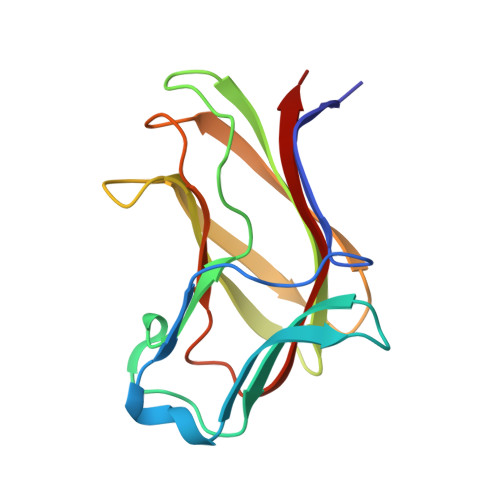Xylan utilization in human gut commensal bacteria is orchestrated by unique modular organization of polysaccharide-degrading enzymes.
Zhang, M., Chekan, J.R., Dodd, D., Hong, P.Y., Radlinski, L., Revindran, V., Nair, S.K., Mackie, R.I., Cann, I.(2014) Proc Natl Acad Sci U S A 111: E3708-E3717
- PubMed: 25136124
- DOI: https://doi.org/10.1073/pnas.1406156111
- Primary Citation of Related Structures:
4MGQ, 4MGS, 4QPW - PubMed Abstract:
Enzymes that degrade dietary and host-derived glycans represent the most abundant functional activities encoded by genes unique to the human gut microbiome. However, the biochemical activities of a vast majority of the glycan-degrading enzymes are poorly understood. Here, we use transcriptome sequencing to understand the diversity of genes expressed by the human gut bacteria Bacteroides intestinalis and Bacteroides ovatus grown in monoculture with the abundant dietary polysaccharide xylan. The most highly induced carbohydrate active genes encode a unique glycoside hydrolase (GH) family 10 endoxylanase (BiXyn10A or BACINT_04215 and BACOVA_04390) that is highly conserved in the Bacteroidetes xylan utilization system. The BiXyn10A modular architecture consists of a GH10 catalytic module disrupted by a 250 amino acid sequence of unknown function. Biochemical analysis of BiXyn10A demonstrated that such insertion sequences encode a new family of carbohydrate-binding modules (CBMs) that binds to xylose-configured oligosaccharide/polysaccharide ligands, the substrate of the BiXyn10A enzymatic activity. The crystal structures of CBM1 from BiXyn10A (1.8 Å), a cocomplex of BiXyn10A CBM1 with xylohexaose (1.14 Å), and the CBM from its homolog in the Prevotella bryantii B14 Xyn10C (1.68 Å) reveal an unanticipated mode for ligand binding. A minimal enzyme mix, composed of the gene products of four of the most highly up-regulated genes during growth on wheat arabinoxylan, depolymerizes the polysaccharide into its component sugars. The combined biochemical and biophysical studies presented here provide a framework for understanding fiber metabolism by an important group within the commensal bacterial population known to influence human health.
- Energy Biosciences Institute, Institute for Genomic Biology, and Departments of Animal Sciences.
Organizational Affiliation:


















